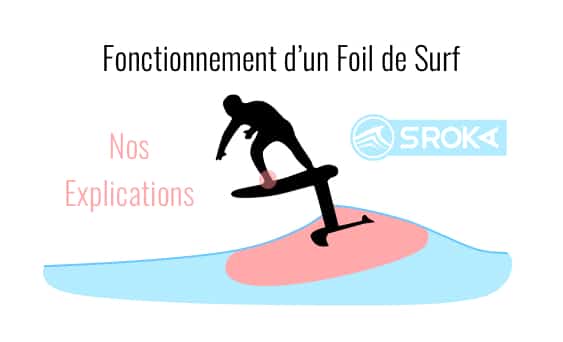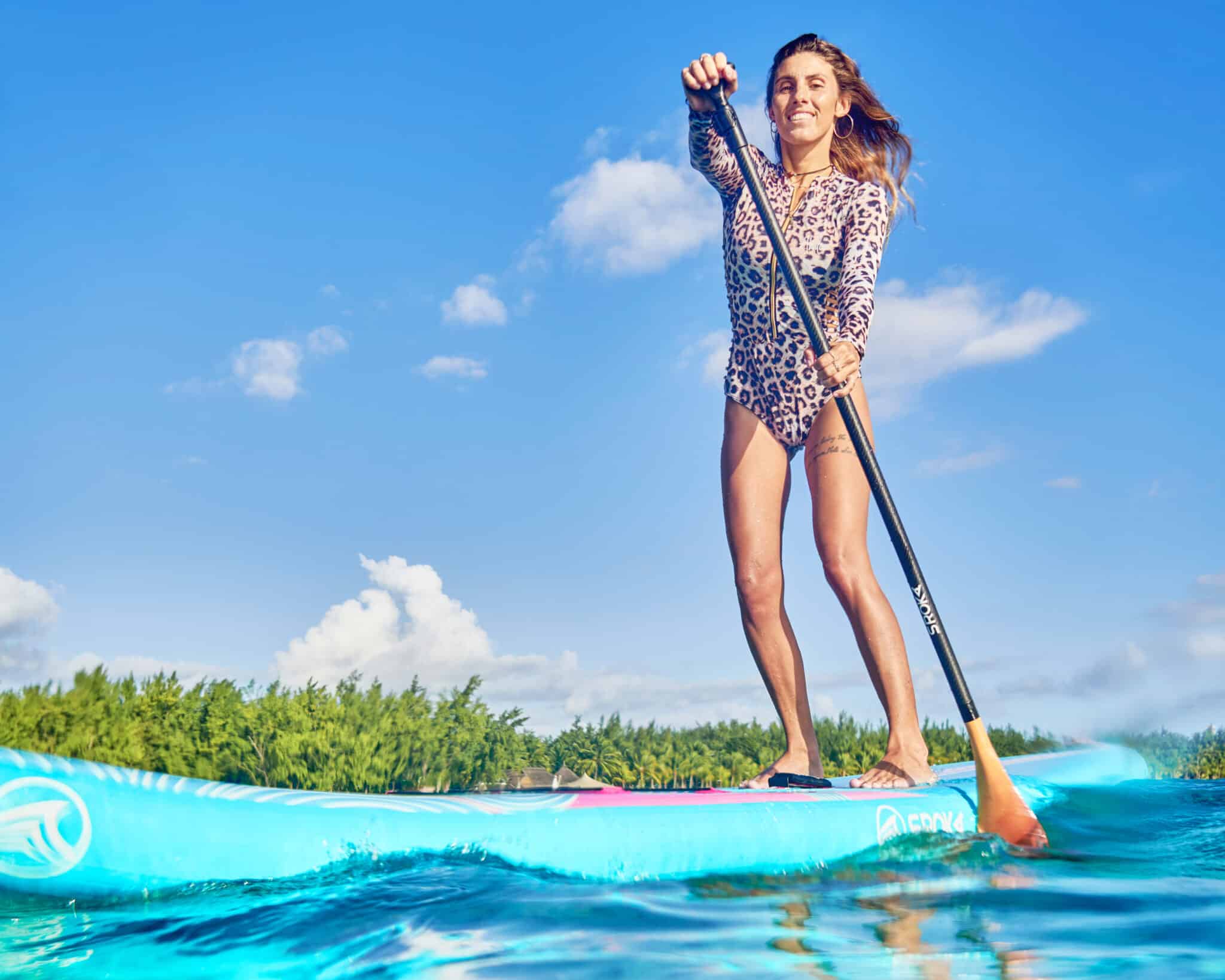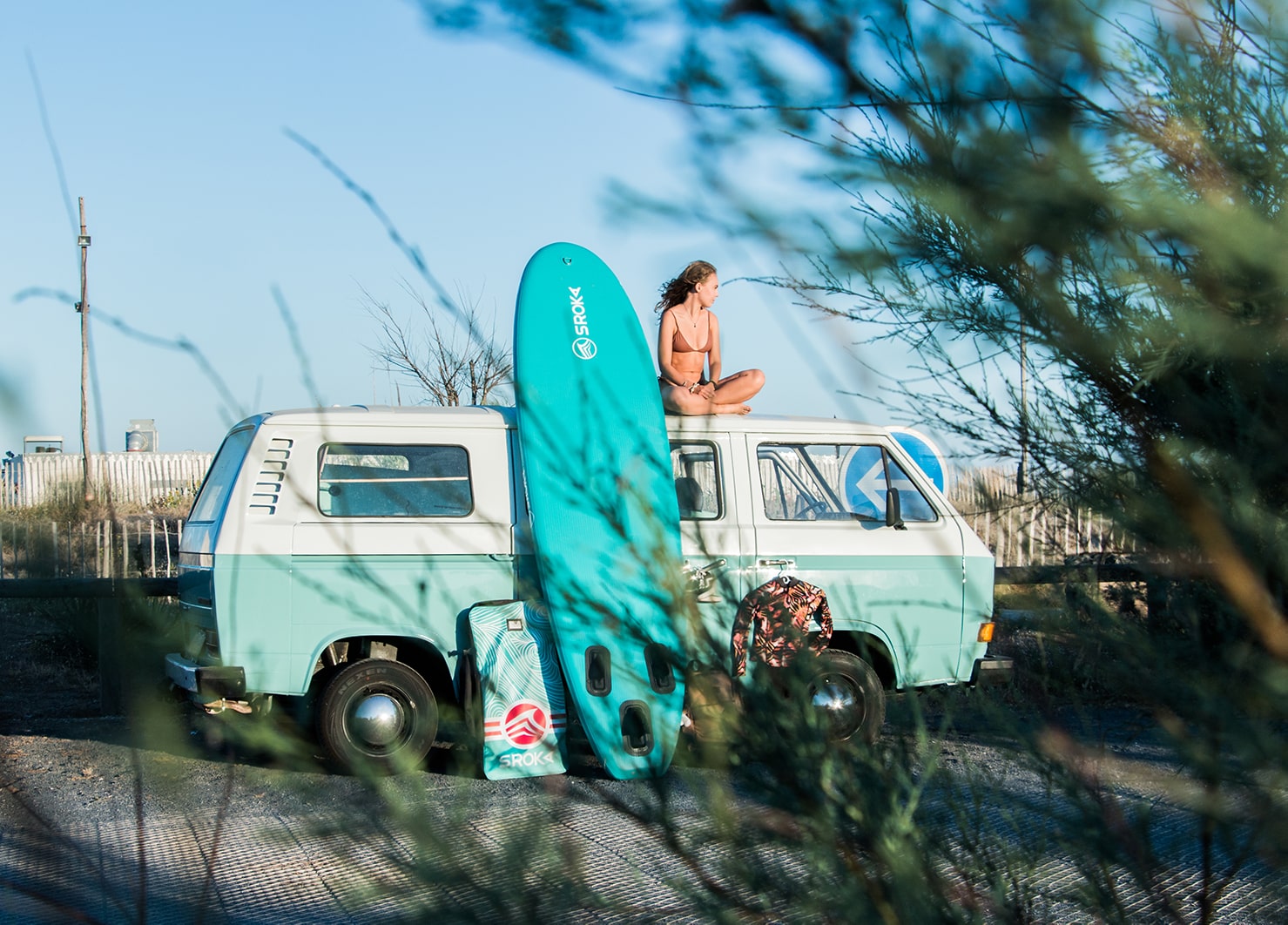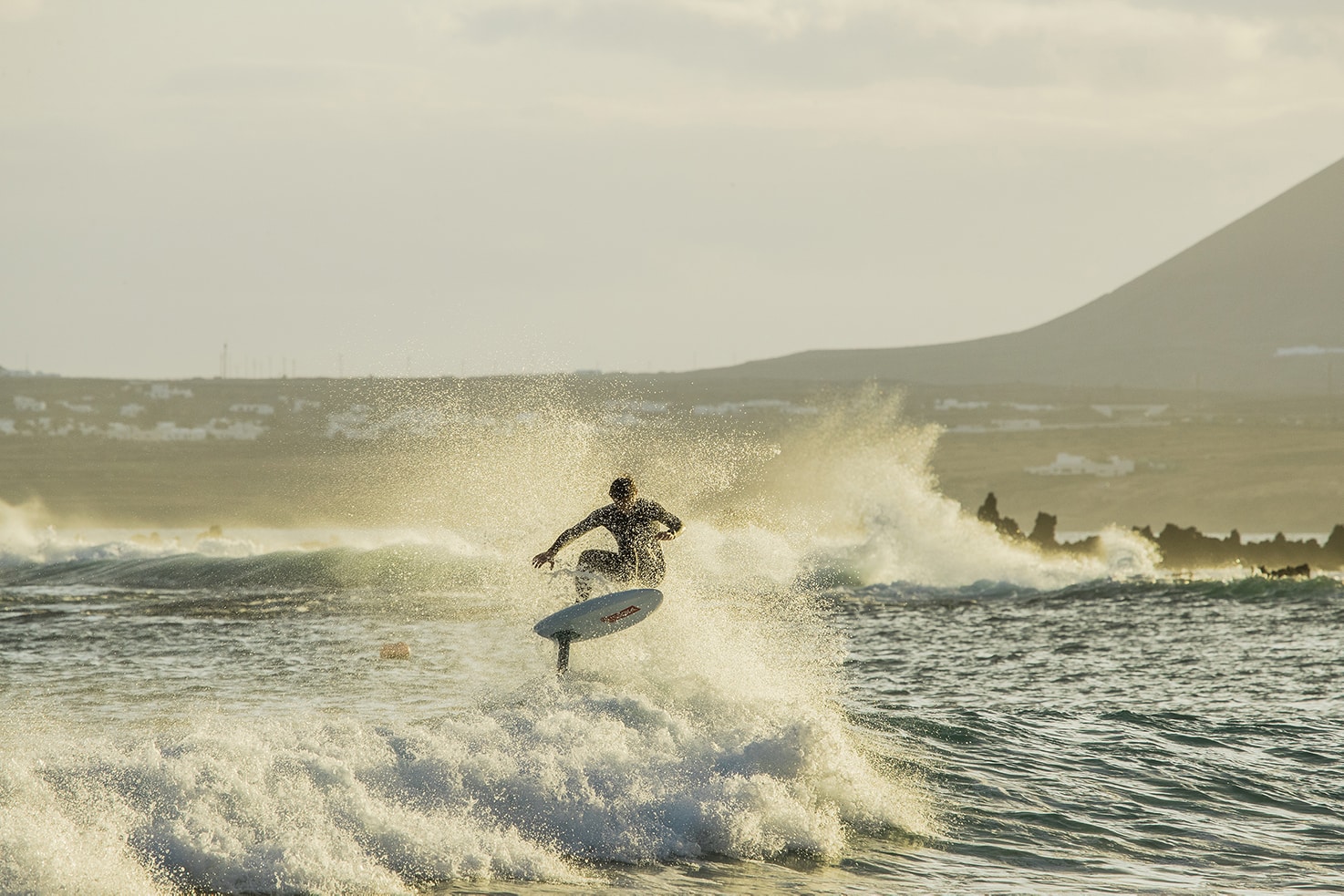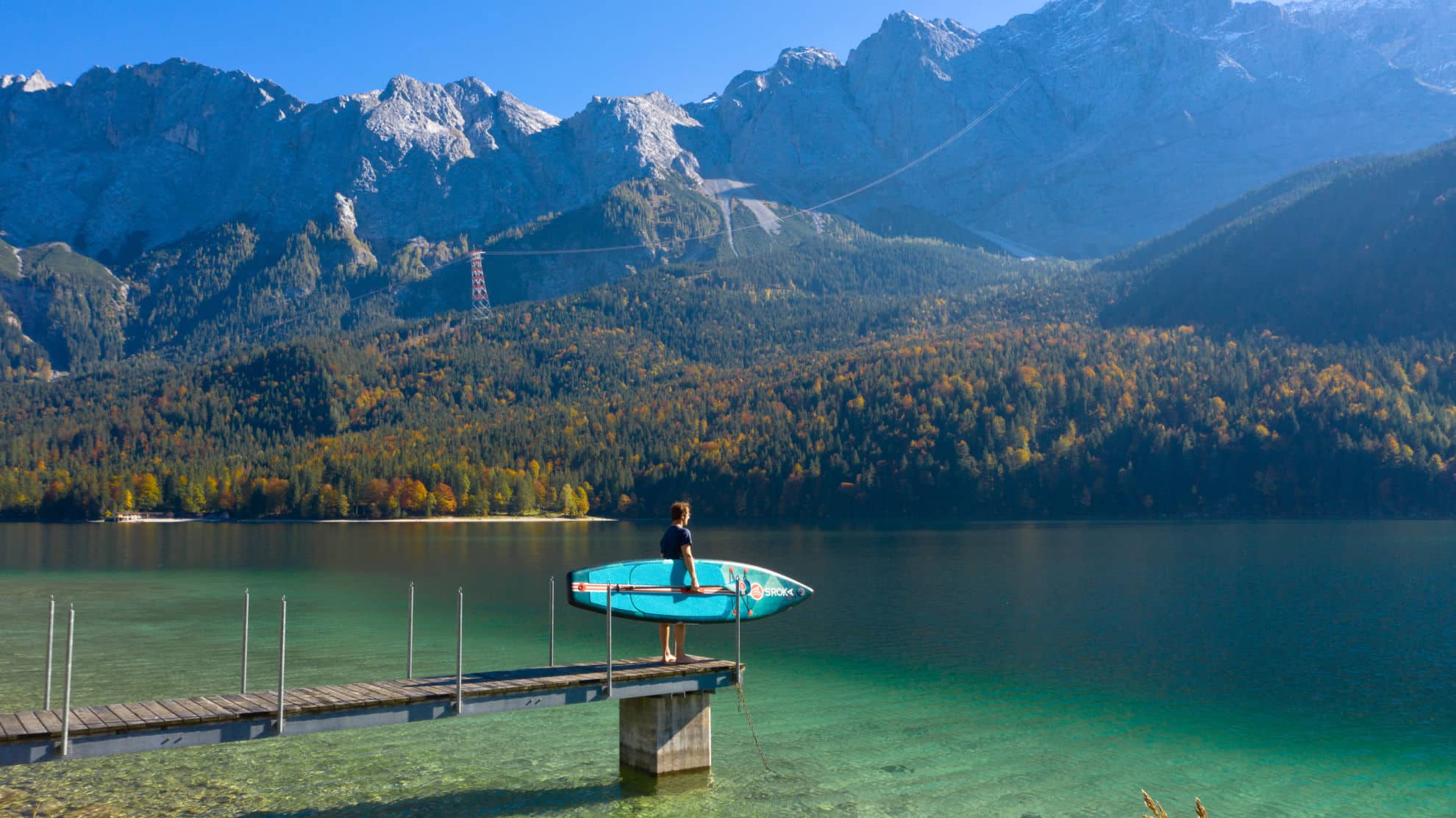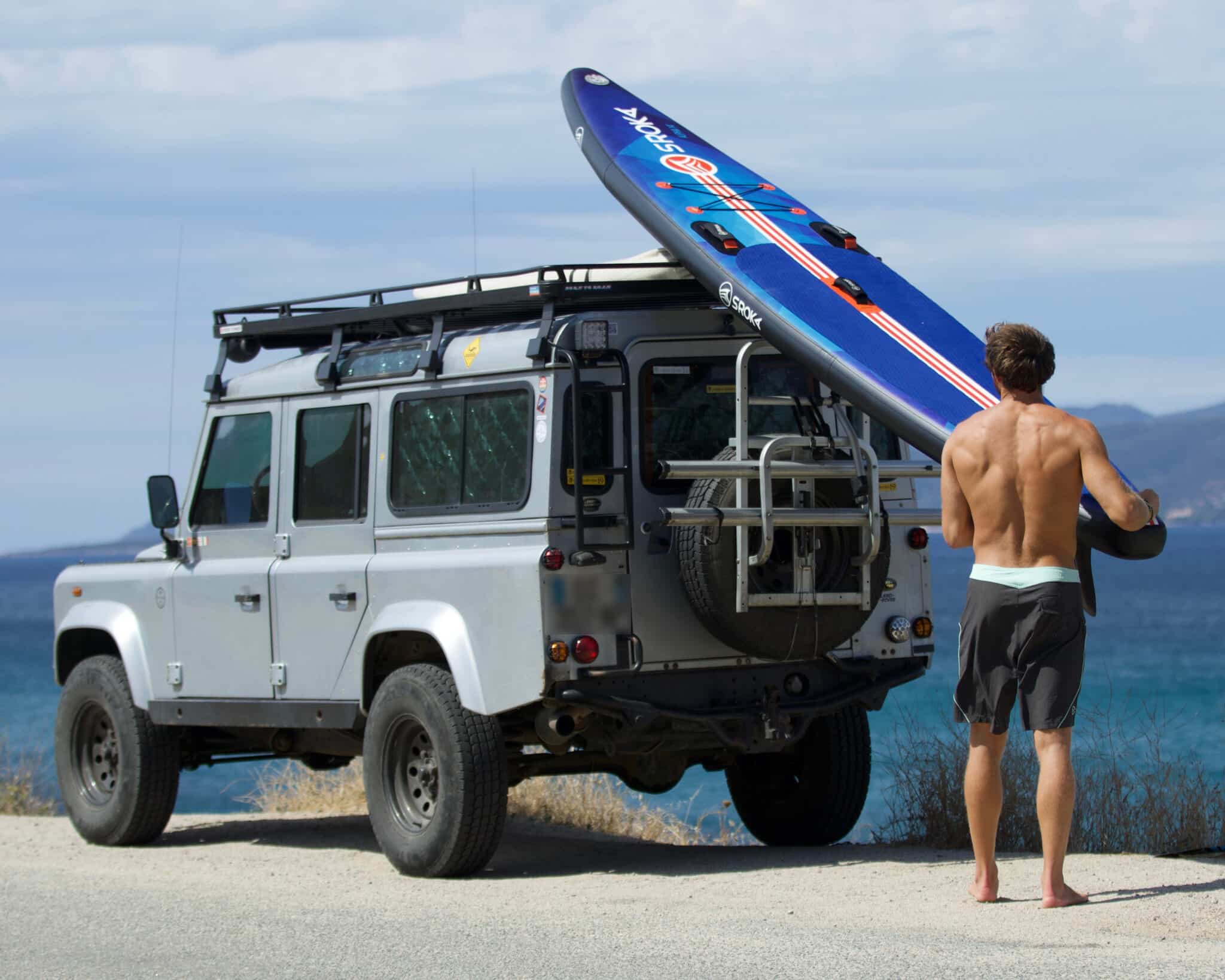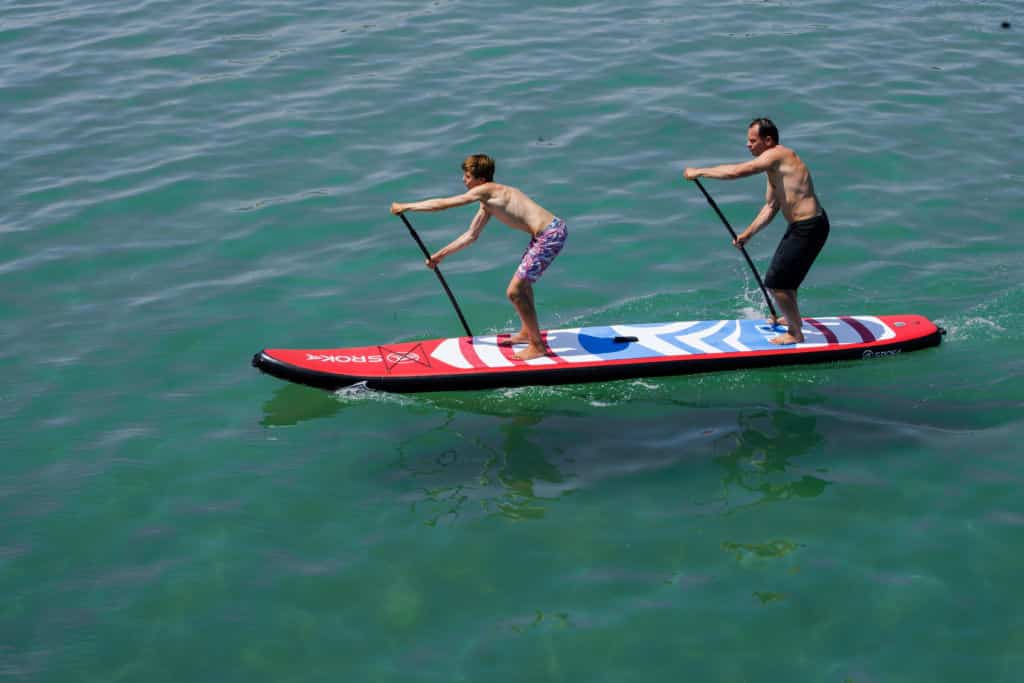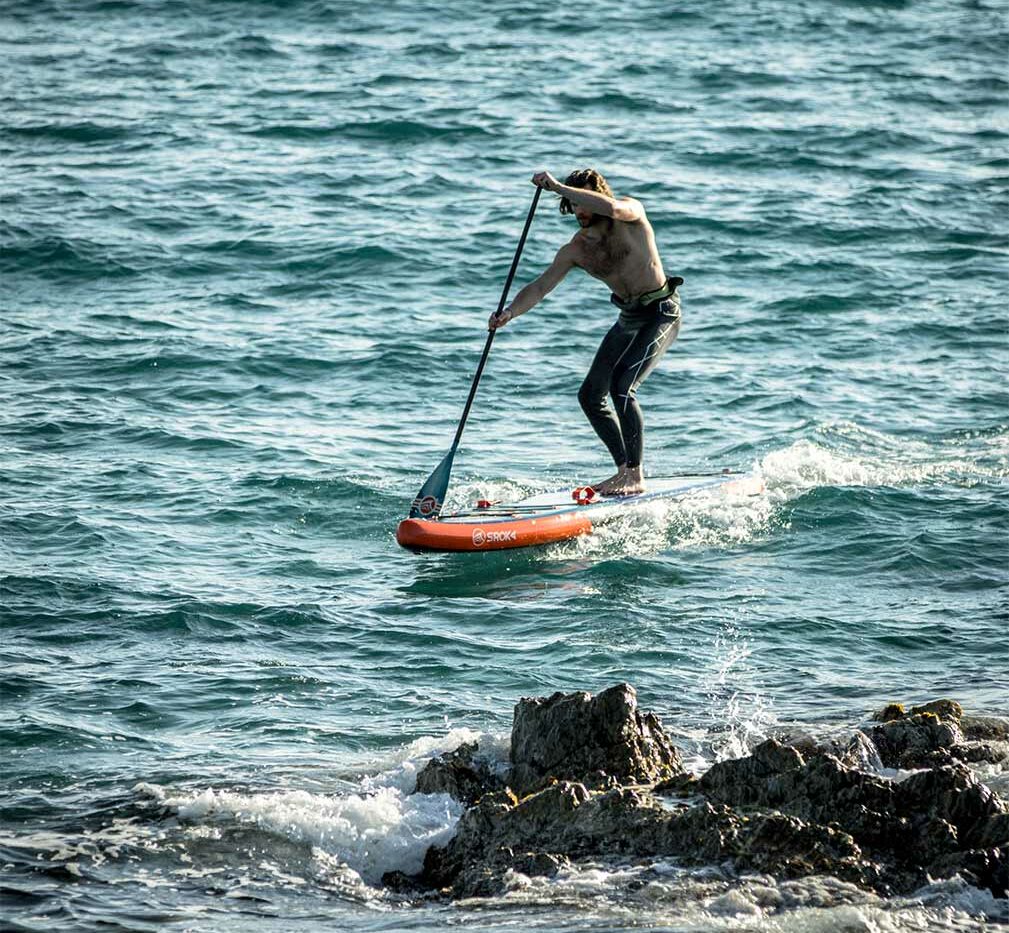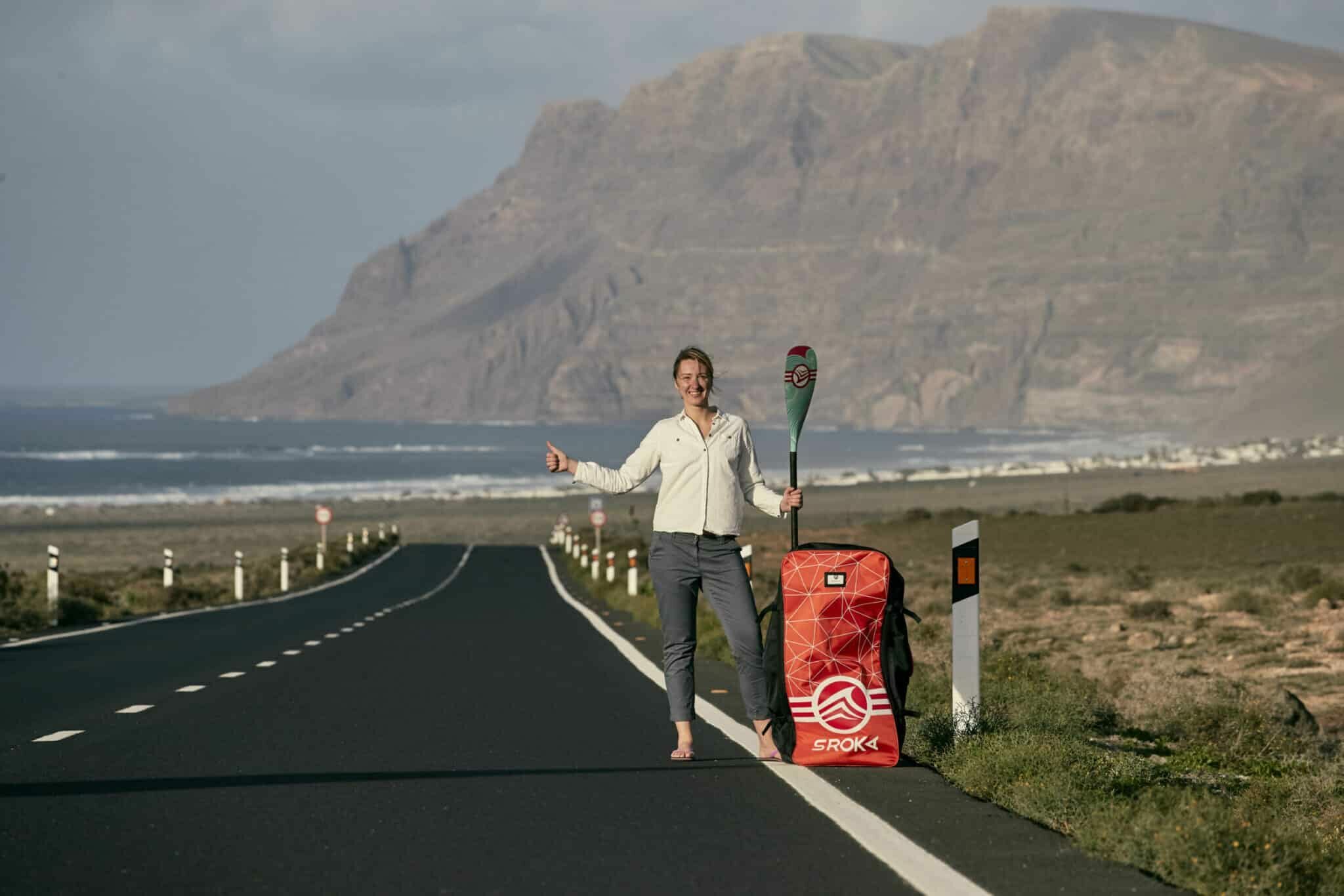 LE MAGAZINE
LE MAGAZINEAll you need to know about paddling: guide and tips

Our tips for paddling
Do you dream of gliding peacefully across the water, discovering new landscapes or simply letting off steam? Stand-up paddling (SUP) is for you! To paddle with confidence, you need to know the different types of SUP, choose your equipment carefully, and keep a few safety tips in mind. Sroka, the board sports specialist, explains in detail how and why you should start stand-up paddling. Practical advice awaits you!
Why start paddling?
Paddleboarding combines pleasure and health, with a host of benefits:
- A fit body : from a physical point of view, paddleboarding calls on many muscles, particularly those of the legs, back, abdominal muscles and arms. It’s an ideal fitness activity for toning your figure and improving your endurance.
- Perfect balance: to stay upright on your board, you need to constantly adjust your position. This natural gymnastic improves your sense of balance and coordination.
- A serene spirit: being in the middle of a natural spot, be it a beach, lake or river, offers a feeling of relaxation and connection with nature.
An activity accessible to all
Contrary to what you might think, paddleboarding is accessible to everyone. Whether you’re an adult or a child, a beginner or an experienced paddler, there’s a board to suit every profile. Thanks to the diversity of board types, there’s something for everyone, whether you’re looking for a paddle yoga session or a sporty run.
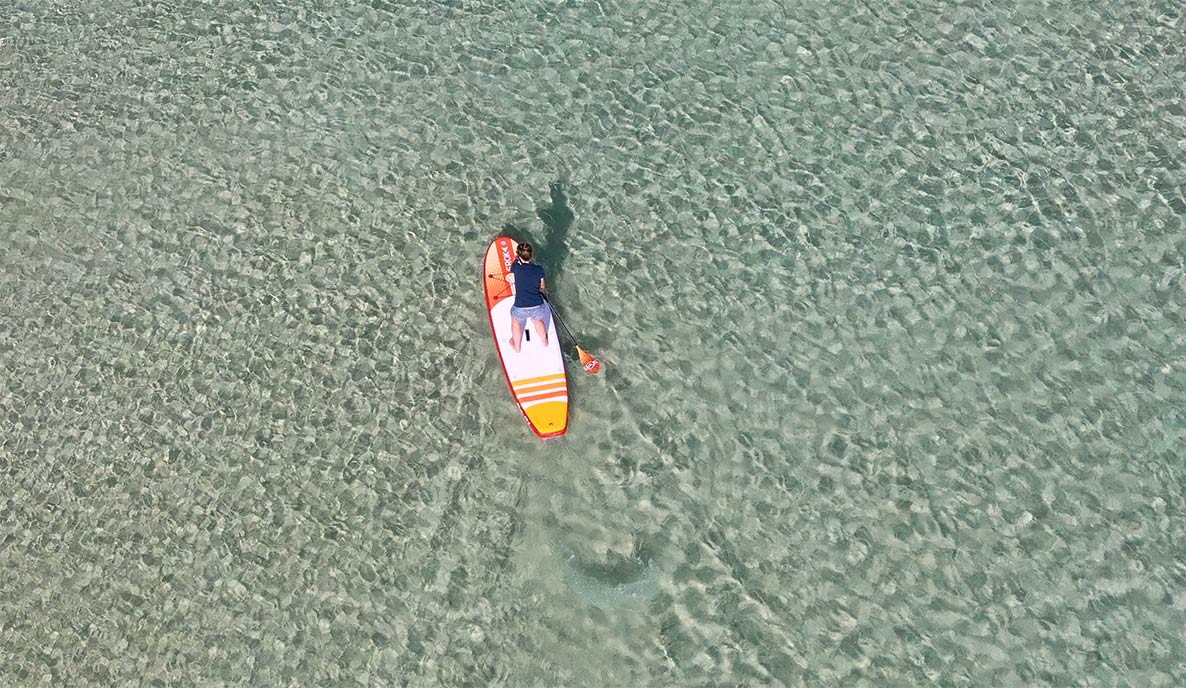
The different paddle disciplines.
Paddleboarding is a discipline that offers a multitude of possibilities to satisfy all tastes:
- SUP surfing : for fans of board sports and thrills,
- Hiking: ideal for discovering landscapes from a new angle. You can explore creeks, rivers or lakes.
- Yoga: Paddle yoga is an original practice that combines the benefits of yoga with those of paddleboarding. You can relax with postures on a wide board, for example.
- Racing: for the more sporty, paddle racing is a discipline that involves covering long distances at high speed.
The basics of stand-up paddling
Before taking the plunge, here are a few basics to master.
Understand the different types of SUP
There are different types of boards:
| Board type | Material | Main use | Advantages | Disadvantages |
| Inflatable Paddle | PVC and Drop Stitch | Leisure, beginners | Easy to transport and store, shock- and fall-resistant, lightweight, | Less rigid, requires prior inflation |
| Rigid Paddle | Fiberglass, epoxy, carbon | Performance, competition | Better glide and rigidity, faster | Heavier, bulky, fragile to impact |
| Paddle Race | Fiberglass, epoxy, carbon | Competitions, long distances | Very fast, designed for speed | Less stable, difficult to manoeuvre for beginners |
| Paddle surf | Fiberglass, epoxy, carbon | Surf, waves | Maneuverable, designed for waves | Less suited to calm waters and long distances |
| Paddle Allround | Fiberglass, epoxy, carbon | Versatile use | Versatile, suitable for different conditions | Average performance, neither especially fast nor very maneuverable |
| Paddle Touring | Fiberglass, epoxy, carbon | Hiking, touring | Good stability, designed for long distances | Not as fast as race paddles |
| Paddle Yoga | PVC and Drop Stitch | Yoga, fitness on the water | Very stable, wide platform | Less efficient for speed, especially suitable for calm waters |
Before you start
Before your first outing, make sure you :
- Know how to swim to reduce risks,
- Assess weather conditions: wind, waves and currents can make paddling more difficult or even dangerous.
- Choose a calm water location: lakes, calm rivers and sheltered beaches are ideal for beginners. Avoid areas with lots of boats or strong currents.
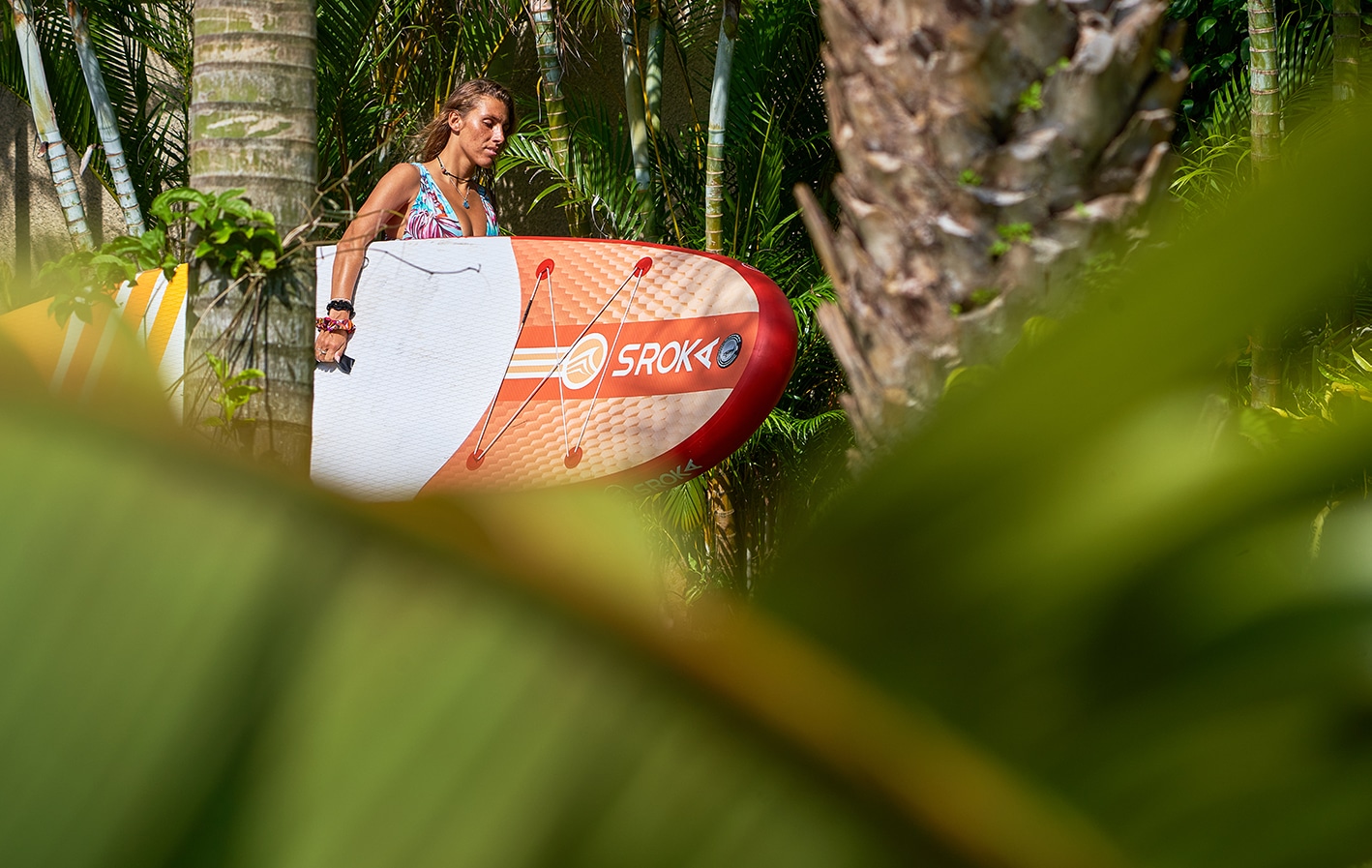
Carrying and storing your SUP board
To avoid injury, learn how to transport your board properly. For a rigid board, we recommend using a transport cart. If you’re transporting it by car, use a strap to distribute the weight. For inflatable boards, a specially designed backpack will facilitate transport.
If you have a rigid board, store it away from bad weather and UV rays. For inflatable boards, deflate it completely before storing it in a dry place away from heat. Clean your board and accessories regularly with fresh water.
Carrying and storing your SUP board
To avoid injury, learn how to transport your board properly. For a rigid board, we recommend using a transport cart. If you’re transporting it by car, use a strap to distribute the weight. For inflatable boards, a specially designed backpack will facilitate transport.
If you have a rigid board, store it away from bad weather and UV rays. For inflatable boards, deflate it completely before storing it in a dry place away from heat. Clean your board and accessories regularly with fresh water.
What equipment should you choose for stand-up paddling?
Now that you’ve got the basics down SUP, it’s time to take a look at the equipment you’ll need to paddle.
Which SUP board to choose?
The heart of your equipment is, of course, the board. As we saw earlier, there are two main types of board: rigid and inflatable.
- Rigid boards offer better glide and greater stability. They’re ideal for regular riders looking for a surf-like sensation. However, they are heavier and less easy to transport.
- Inflatable boards are lightweight, compact and easy to store. They’re perfect for those who want to discover and learn paddling on the move. They are also more versatile, and can be used on the sea, river or lake.
For beginners, an all-around inflatable board is recommended. It offers a good compromise between stability, versatility and ease of transport. Board size is also important. The heavier you are, the wider and thicker the board you’ll need to ensure good flotation.
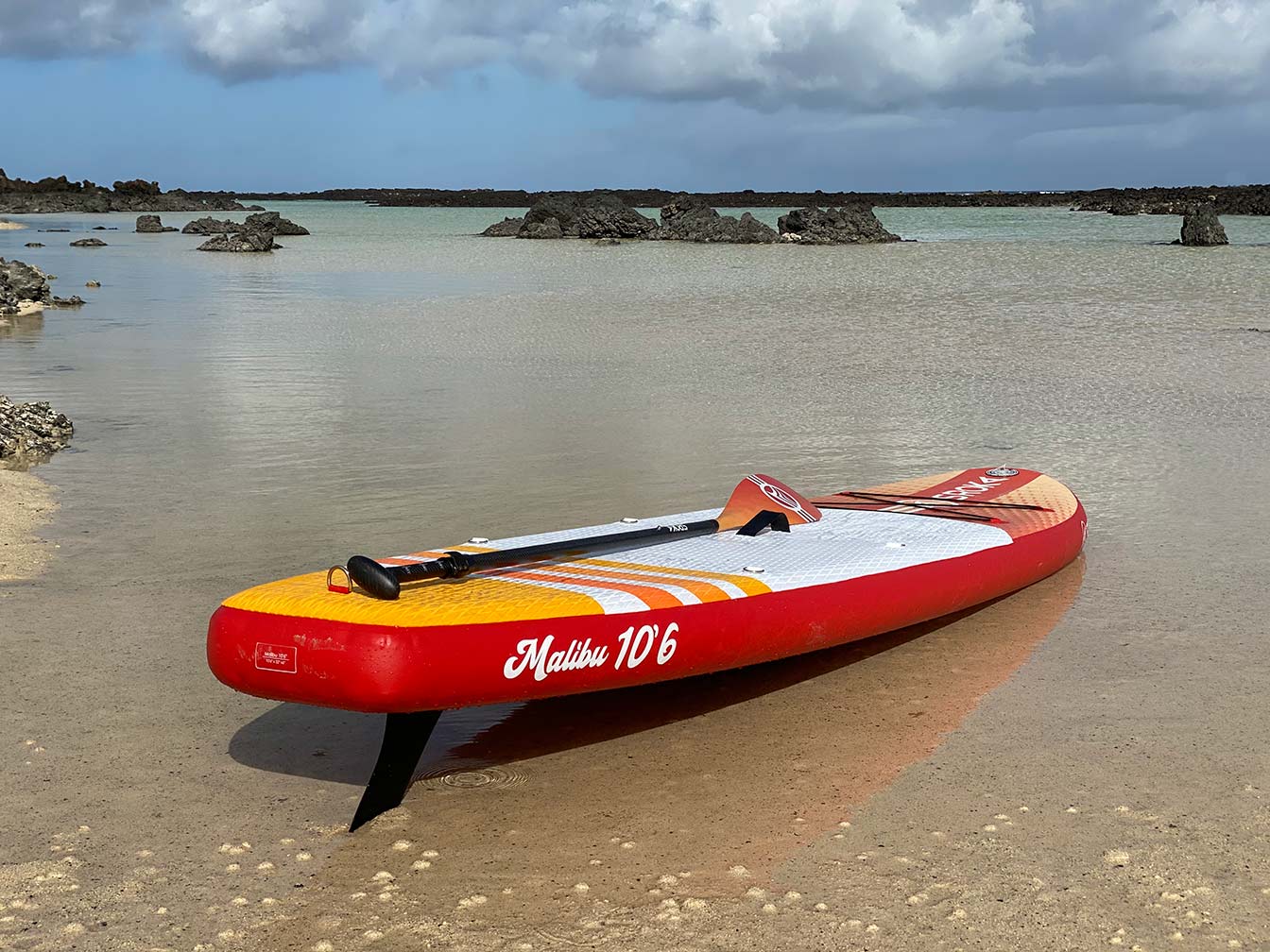
Essential paddle accessories
To complete your equipment, you will need several accessories:
- The paddle: the paddle must be adapted to your size and level. There are adjustable paddles that allow you to adjust the length to suit your body shape.
- The leash: the leash is a cord that connects your ankle to the board. It prevents you from losing your board in the event of a fall.
- The pump (for inflatable boards) inflates your board to the pressure recommended by the manufacturer.
- Wetsuit: a wetsuit will keep you warm and comfortable in the water, especially outside the summer season.
- Lifejacket: although not compulsory in all cases, a lifejacket is highly recommended, especially if you’re not comfortable swimming.
- The carry bag: a carry bag allows you to transport your board and accessories with peace of mind.
- And don’t forget UV protection: caps and sunscreen.
3 essential techniques for paddling and maneuvering
Before getting up, take time to familiarize yourself with your board. Start by kneeling on it and paddling gently to get comfortable. This intermediate position will help you get used to the motion of the water.
- Climbing and standing on your board: start by getting down on your knees before slowly moving to a standing position. Maintain a stable posture.
- Paddle correctly: use your paddle to row efficiently. Hold your paddle in the right direction. Alternate strokes on each side to move straight ahead. To turn, make wider strokes (or on one side, paddle normally and on the other side, paddle backwards: from back to front). This will allow the board to rotate on itself).
- Start in calm waters: for your first steps, choose a calm environment such as a lake or river with a slow current. This will enable you to concentrate on your balance and technique without being disturbed by waves or wind.
In addition to these 3 essential techniques, always look ahead, take deep breaths to relax and, above all, have fun! Paddleboarding is above all about having fun.

Safety and best practices in SUP
Paddleboarding takes place in an aquatic environment and can present certain risks, particularly in adverse weather conditions or if you stray too far from the shore. That’s why it’s essential to take every precaution to ensure your safety and that of others.
Always wear a lifejacket and attach leash to your ankle. Respect local regulations and avoid areas with strong currents. Even in good weather, wind can quickly complicate practice. Always take the time to assess the risks before setting out.
All your gear SUP at Sroka
Sroka offers a wide range of stand-up paddle equipment to help you get the most out of your paddle. Whether you’re looking for an inflatable board or accessories and spare parts like paddles and vests, we’ve got everything you need for an optimal experience.
Visit our catalog to discover all our offers and equip yourself for your next paddle sessions!
If you have any further questions, or if you have any other requests, please don’t hesitate to contact us!
 Le Magazine
Le Magazine



